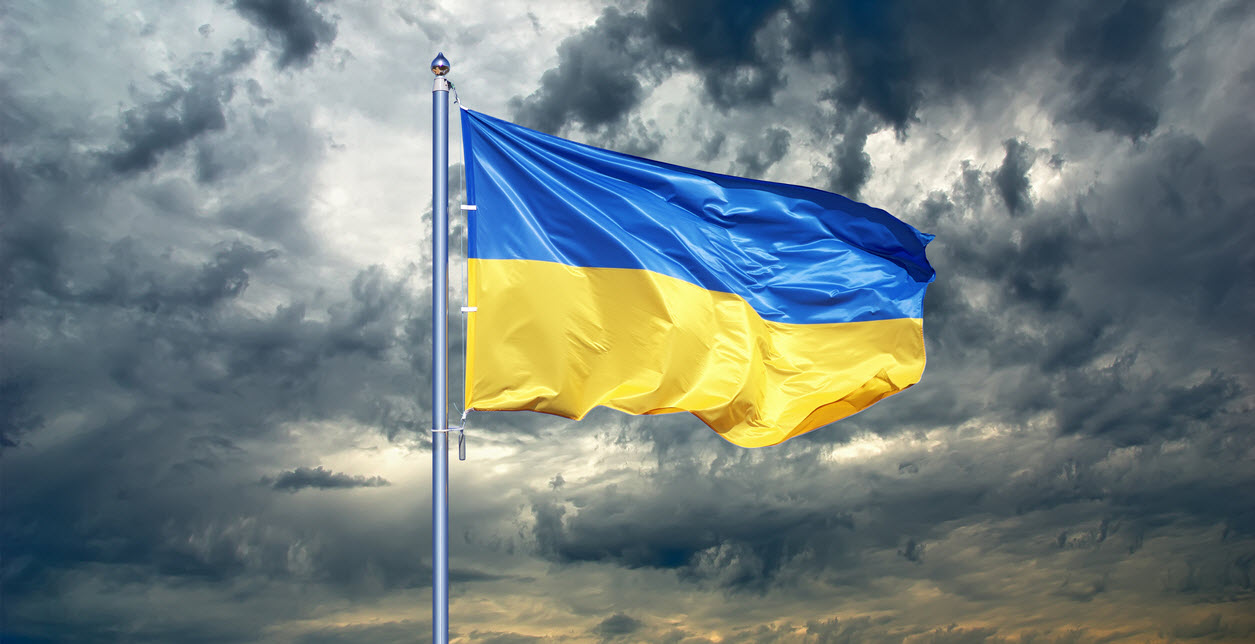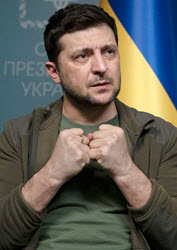| By Gale Staff |
From Kyiv to Kharkiv to the seaport town of Odessa, the people of Ukraine are living on a battlefield. Millions of people, their homes, their businesses, their way of life destroyed or abandoned after Putin’s invasion in February 2022.
The war in Ukraine began Europe’s first major war in decades, leading governments, organizations, and families to wonder what this means for Europe and its future.
As an organization and as individual citizens of the world, we at Gale stand firmly with the people of Ukraine. And as an education provider, we stand with you in your efforts to deliver authoritative, credible information to learners while trying to make sense of the unprovoked invasion by the Russian Federation.
Where to Begin
Your students and patrons are likely curious about Ukraine and what events led to the current war. From online search results to paid social media articles, there’s no shortage of information available to them, but is it accurate? Does it come from a trustworthy source? Whether you’re a public librarian, K-12 educator, parent, or someone who’s interested in learning more, you have the power to replace misinformation with the truth.
Access authoritative information about the current crisis, the country of Ukraine, and President Zelenskyy’s unconventional rise to power from the following sample of Gale content below. If you’re a Gale subscriber, you may have access to this content and more. Check here.
A Brief History of Ukraine
For upper-elementary school reading. The area that came to be called Ukraine was originally called Kievan Rus. Kiev was a political and cultural center in Eastern Europe. The Mongols conquered the area in 1240, and from the late-thirteenth century through the sixteenth century, the area was under Polish control. In 1654, Ukraine was absorbed into the Russian Empire. After the 1917 Russian Revolution, Ukraine became a Soviet republic under the dictator Joseph Stalin. Read more about the history, topography, and people of Ukraine from Gale In Context: Elementary.
For middle school reading. Ukraine is the second-largest country in Europe. The country’s location is of strategic importance. Since its independence in 1991, Ukraine has experienced unrest in some of its mostly Russian areas. The Crimean Peninsula (Crimea) declared independence on May 6, 1992. Crimea’s demands for secession have continued to complicate Ukrainian-Russian relations. Read more about Ukraine’s social development, political parties, and economy from Gale In Context: Middle School.
For upper–high school and college-level reading. Tensions between ethnic Ukrainian and Russian populations in Ukraine, compounded by political pressures from Russia and the United States, reached a peak during the campaign leading up to the 2004 presidential elections. Prime Minister Viktor Yanukovych, supported by Russia, and opposition leader and former Prime Minister Viktor Yushchenko, supported by the West, came out in a tie. Yanukovych came out as the winner, but many Ukrainian citizens felt this result was fraudulent and took to the streets in what is known as the Orange Revolution. Read more about current tensions as well as Ukraine’s rich cultural history from in Gale In Context: High School.
For adult patrons, high school, and college students, read more about Ukrainian nationalism and political divisions from Gale In Context: World History.
The Russian-Ukrainian Conflict Explained
The 2014 annexation of Crimea triggered an armed conflict between Russia and Ukraine. Forty thousand Russian troops remained along Ukraine’s eastern border, and fighting broke out between the Ukrainian military and Russian-supported paramilitaries. France and Germany helped broker the Minsk II agreement in January 2015, when Russia and Ukraine agreed to a cease-fire. Tensions along the Russia-Ukraine border increased again starting in March 2021 due to accusations by both countries that the other had violated the cease-fire agreement. Read more from Gale In Context: Global Issues.
Beginning in late 2021, Russian President Vladimir Putin oversaw a major buildup of Russian military assets along the country’s border with Ukraine. Western experts have largely characterized the military maneuvers as a continuation of the Russian aggression from the occupation of Crimea in 2014. In December 2021, Russia issued an eight-point series of demands as its military buildup along the border of Ukraine intensified. Key demands included a guarantee that Ukraine would not be admitted to NATO, along with strict limits on the deployment of NATO personnel and military equipment in the alliance’s eastern boundary. The demands confirmed analysts’ beliefs that Russia viewed NATO’s expanding presence in the region as aggressive and dangerous. Read more about how the expansion of NATO has impacted the war in Ukraine from Gale In Context: Global Issues.

Volodymyr Zelenskyy: The President of the People
For upper-elementary school reading. With all the fighting and fear his country is facing, President Volodymyr Zelenskyy has become a symbol of hope for many Ukrainians. The 44-year-old president is far from a career politician. After earning his law degree, the president joined a successful comedy group in the late 1990s, which earned him voice-acting roles in movies like Paddington and Paddington 2.
He then rose to fame for the show Servant of the People in 2015. He played a high school history teacher whose rant on political corruption in Ukraine goes viral and results in him becoming president. Three years after the show’s debut, the production company launched a political party named after the show, with Zelenskyy declaring his interest in politics. He ran for president in the 2019 election, unseating incumbent Petro Poroshenko by winning with more than 73 percent of the votes. Read more about President Zelenskyy from Gale In Context: Elementary.
For adult patrons, high school, and college students. As a political novice whose pledge was to provide Ukrainians with a less corrupt and more transparent form of governance, Zelenskyy was unnerved by having been revealed as nearly surrendering to U.S. President Trump’s insistence on an illegal quid pro quo deal to obtain nearly $400 million in U.S. military aid. Zelenskyy later became resolute that Ukraine and its leaders will not be the service staff of American politicians. Now, he continues to encourage his citizens to fight against Putin’s propaganda and protect Ukraine. Read more about President Zelenskyy’s career and response to the Russian-Ukrainian conflict from Gale In Context: Biography.
Find More Topics for Learners
The war in Ukraine brings up a wide range of topics and concerns. Whether you’re teaching a high school world history course or wondering what information to offer adult patrons, you can find thousands of reliable, trustworthy sources within Gale’s portfolio of products. For further reading, we’ve included a selection of content available on this important topic:
- Environmental Disasters – Unlike natural disasters, like weather events and geologic processes, environmental disasters are caused by human activity. Acts of warfare and terrorism lead to a chain of events that can have long-lasting, catastrophic consequences. Read about it here in Gale Health and Wellness.
- The Nuclear Power Accident at Chernobyl – The accident at the Chernobyl nuclear power plant is the deadliest disaster in the history of the nuclear energy industry. Read about its history here from Gale In Context: Environmental Studies.
What’s behind the latest scare at the Chernobyl plant? This article from the Associated Press (AP) takes a close look. Read about it here.
- Nuclear Nonproliferation Treaty (NPT) – This treaty was signed by several countries, with the goal to prevent the spread of nuclear weapons and nuclear weapon technology. Read about it here from Gale In Context: Global Issues.
- Inside Ukraine’s Cybercommand Center – With modern-day war comes an increased chance of cyberattacks. Read about it here from Gale In Context: Global Issues.
Share this content with your students, teachers, or library patrons. If you want more, Gale offers a variety of resources for education, lifelong learning, and academic research. Find out if you have access to Gale resources through your school or library.
Want more content? Read The Russia-Ukraine Conflict: Teaching Moments Found in Primary Sources >>



